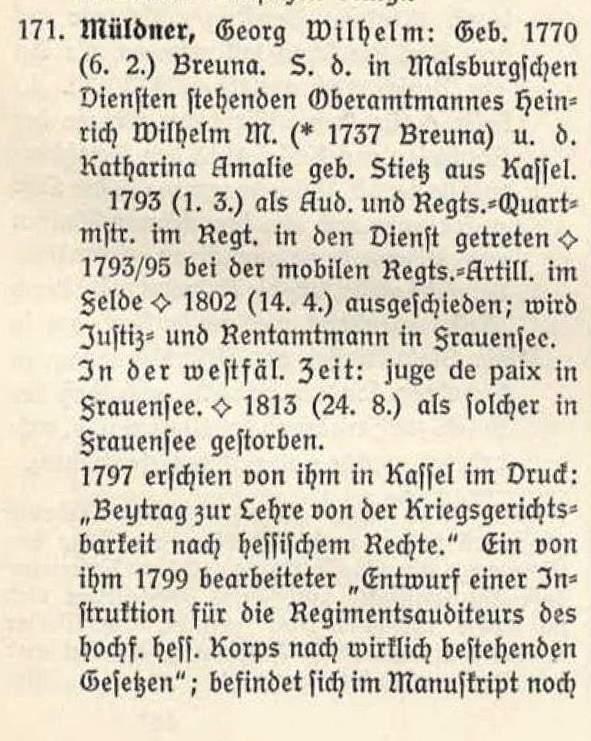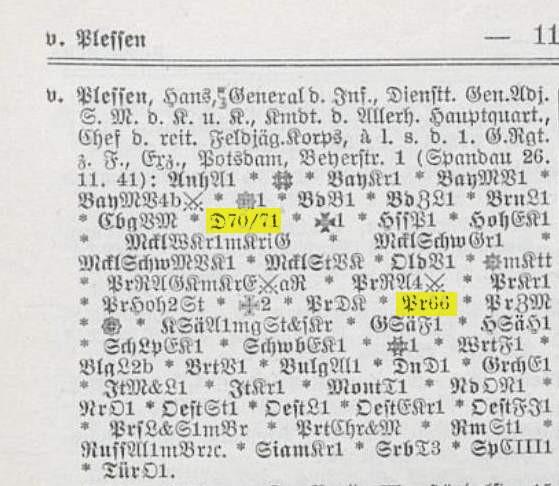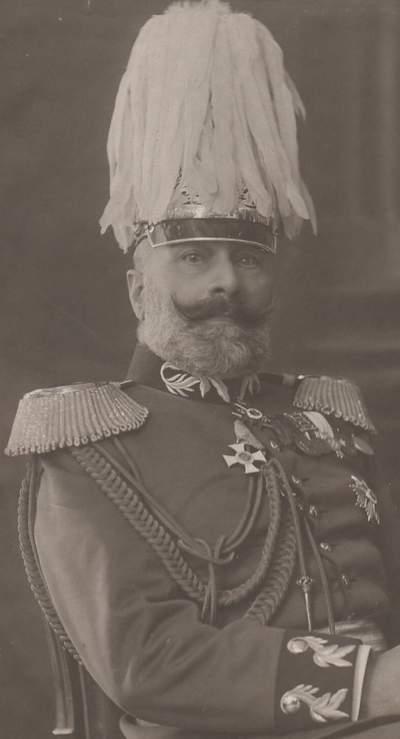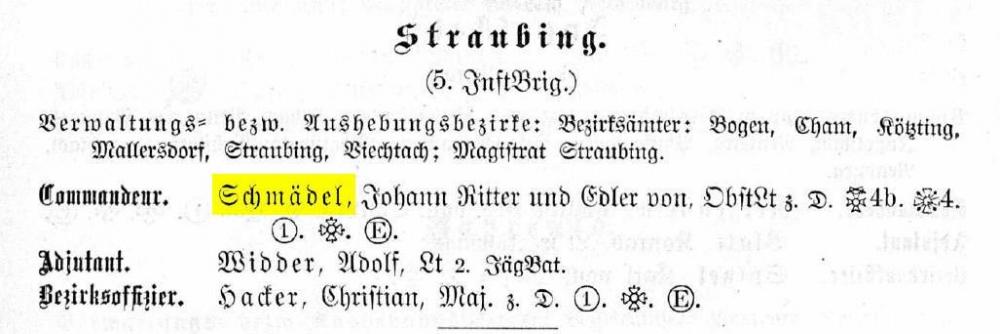-
Posts
2,234 -
Joined
-
Last visited
-
Days Won
55
Content Type
Profiles
Forums
Blogs
Gallery
Events
Store
Everything posted by Glenn J
-
Jon, I think Dave will not mind me answering this; No, General v. Prittwitz did not buy the medal but paid for it to be included in the Almanac. He would have been awarded the medal in steel for his involvement in support of the efforts in China, for example the provision of troops from his corps for the expedition. as Dave alluded earlier, the DOA was a vanity affair and as one had to pay by length of entry for submissions in the almanac, the more parsimonious subscribers omitted their lesser awards such as campaign and jubilee medals. Regards Glenn
-
Hi Andy, indeed and there was further reorganisation in 1913. With effect 1 October 1913, the Bespannungs-Abteilungen of Foot Artillery Regiments 6, 9, 13, 15, 16 and 18 had their establishment of personnel increased to each form two detachments which were named the 1. and 2. Bespannungs-Abteilung of their respective regiments and attached to the I. and II. battalions of their parent regiment respectively. In effect then, the sabre can further be dated between October 1912 and October 1913. Regards Glenn
-
Brian, Andreas pretty much explains it. It refers to the Bespannungs-Abteilung or horse drawn detachment of the regiment. As originally formed, the foot artillery was specifically detailed for use in the manning of fortresses. However as doctrine changed in the late nineteenth century, elements of the foot artillery were to accompany the army in the field for such tasks as siege work and the like. To that end, an horse drawn component was established for foot artillery regiments, initially provided by the Train branch but from 1902 onwards as an integral part of the foot artillery. Regards Glenn
-
Jon, I mentioned the Deutsche Ordens-Almanach. Both the 1904/05 and 1908/09 are available on line. See here: https://archiv.ub.uni-marburg.de/eb/2013/0153/ https://archiv.ub.uni-marburg.de/eb/2013/0152/ Here is General von Plessen's entry from 1908/1909. His campaign medals for 1866 and 1870-71 are highlighted. Regards Glenn
-
Hi Jon, it can be a bit hit and miss. Regimental histories often contain the "Kriegsrangliste" of the regiment detailing the participating officers and usually if a regiment has an "Offizier-Stammliste" that will also usually mention participation during a conflict. However, with regard to one of your examples above, Hans von Plessen; although he was an active officer at the time of the 1864 campaign, he did not see combat. Although his Wikipedia entry would leave one to believe "he participated" in the 1864 war against Denmark, he was actually serving with the replacement battalion of Garde-Grenadier-Regiment Nr. 4 in the Rhineland during that campaign. Consequently you will not find a "Kriegsdenkmünze" for 1864 on any of his portraits. As an aside, the Bavarians are much more accommodating; they listed just about everything in their Militär-Handbuch. Regards Glenn
-
Jon, the basic problem is, that campaign medals were not listed in the Prussian army Ranglisten. This would include those issued for 1864, 1866, 1870-71, China and German South West Africa. Additionally commemorative medals such as the 1897 and jubilee medals are also not listed. The Deutsche Ordens-Almanach can throw some light on these awards (assuming the recipient paid to have all his awards listed). Regards Glenn
-
Hi Arho, I tend to agree that it is indeed Jakob Hitzler. It would pre-date his 1 January 1902 award of the BMV4a. He is shown in the 1871 Militär-Handbuch as an Offizier-Aspirant (Junker) in the 7. Infanterie-Regiment. However, there is another possiblity: Oberstleutnant Benno Brünn, Landwehr-Bezirkskommandeur of Kaiserslautern around the same time and who had exactly the same decorations and wore the number 6 on the epaulettes. Oberst Brünn was a Junker in 2. Jäger-Bataillon in 1871. Regards Glenn
-
Morning chaps, well, I am no tailor so cannot comment on the relative size of the tunic in question. What I can say is that Generaloberst von Prittwitz was the ONLY officer of that rank entitled to wear the uniform of Grenadier-Regiment Nr. 6, being appointed à la suite to the regiment on 9 May 1911. Generaloberst since 6 June 1913. Regards Glenn
-
Morning, Born 30 August 1858 at Sulzbach. DA2: 30.09.01 BMV4b: 05.03.02 RAO4: 17.06.02 WF4: 17.06.02 BZ5E: 17.06.02 JM: 12.3.05 BMV4a: 14.12.05 KLK: 07.01.16 EK2: 04.09.16 25.01.15: char. Oberstleutnant Following mobilisation he was appointed as the commander of the replacement battalion of 11. Infanterie-Regiment. The awards date the photo therefore between the rash of awards on 17 June 1902 and his promotion to Major on 15 October 1902. Incidentally as a Bavarian non-veteran of the Franco-German War, he was not automatically entitled to the award of the Prussian centenary medal of 1897. Regards Glenn
-
ArHo, Hauptmann Thomas Birzer of 6. Infanterie-Regiment in 1902. He received all these orders prior to his 15 October promotion to Major but after the publication of the 1901 Militär-Handbuch when he still only had the DA (LSC 24). He is shown in the 1903 MHB as a Major in 17. Infanterie-Regiment with all these orders. Regards Glenn,
-
Joe, of the three, I have found only August Freund still listed as an Oberinspektor (Beamte bei den Wirtschafts- und Rechnungsämtern) as late as 1930 (WRA Löbau). He is listed as an Inspektor at WRA Löbau in 1922 and as an Oberinspektor at WRA Leipzig in 1927). From Siekmann's Taschenkalender 1922, 1927, 1939. Regards Glenn










